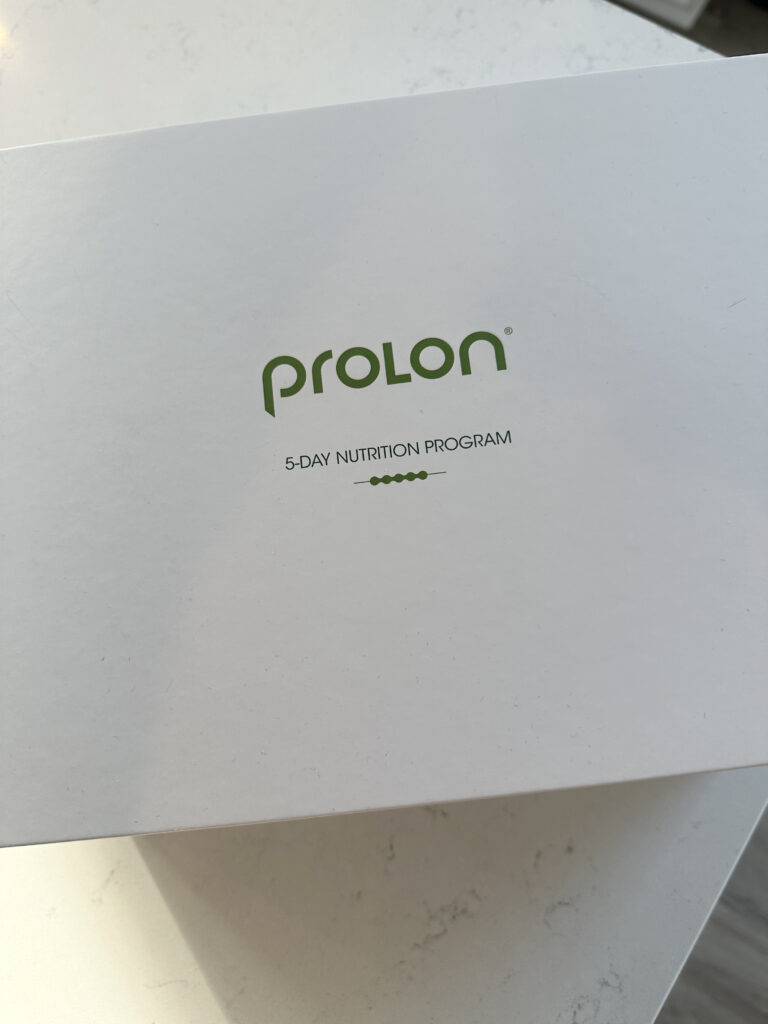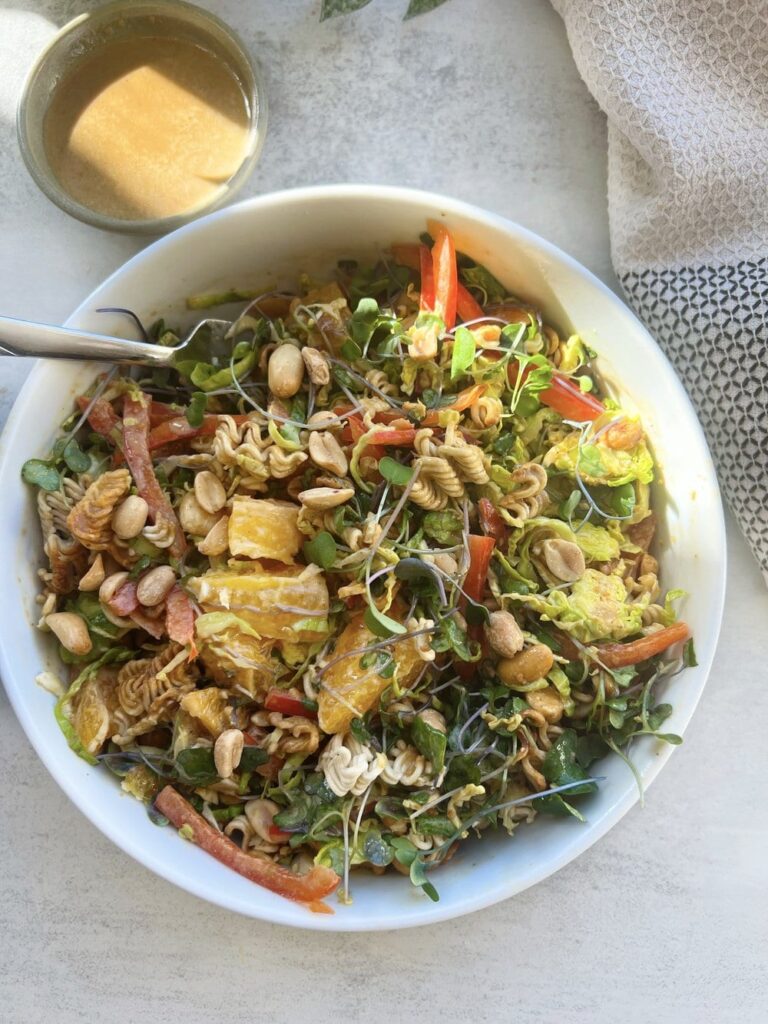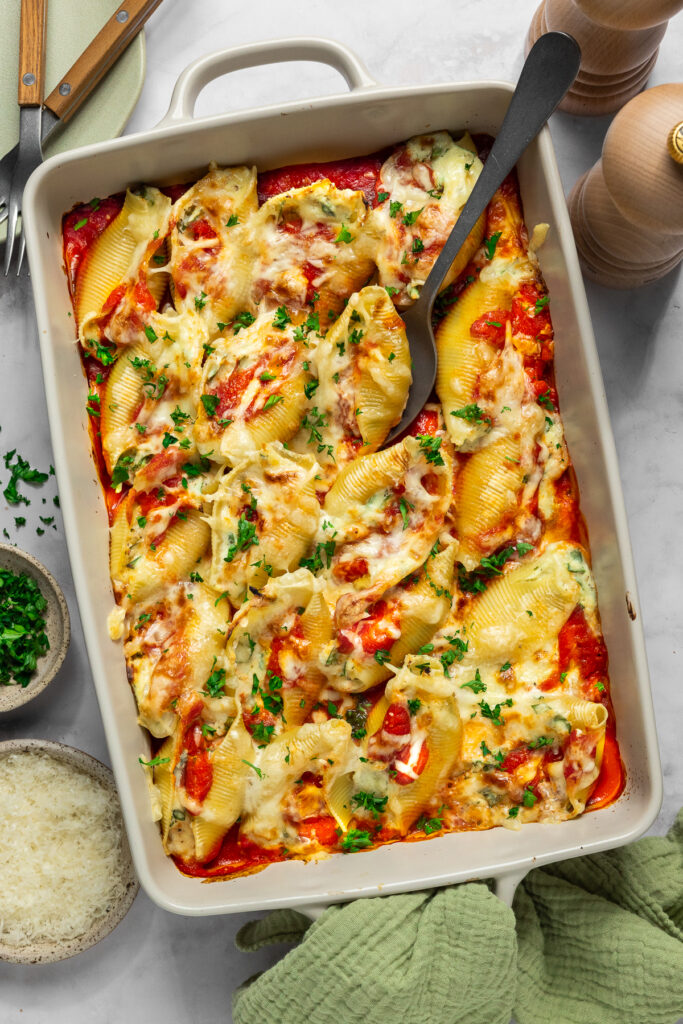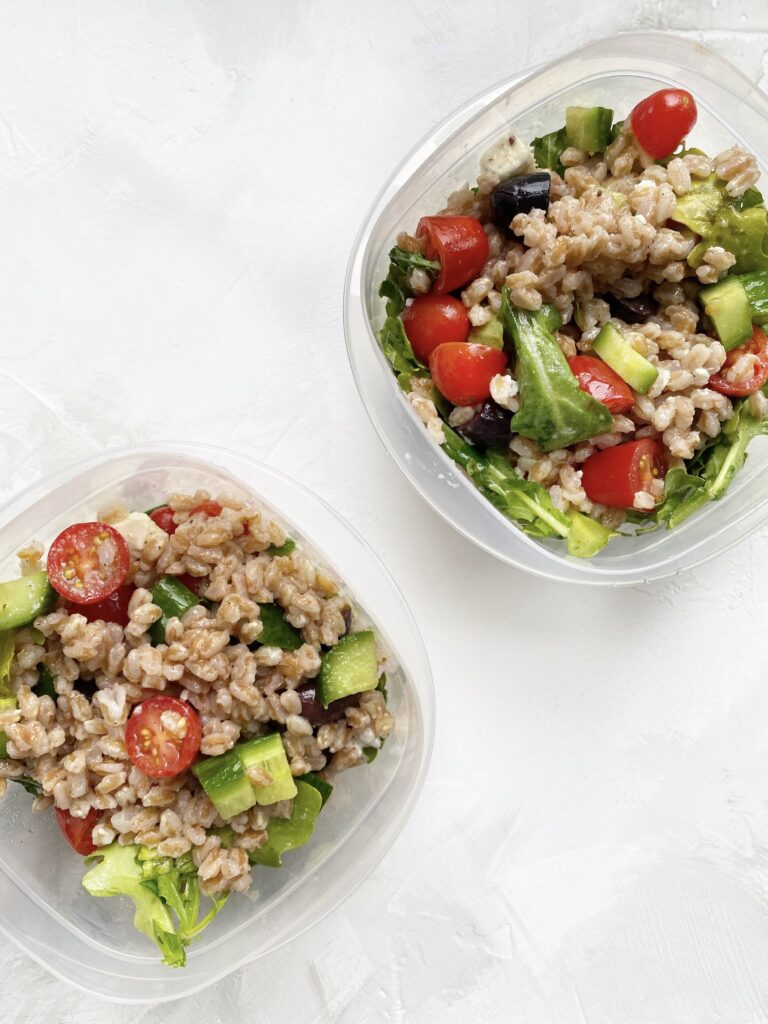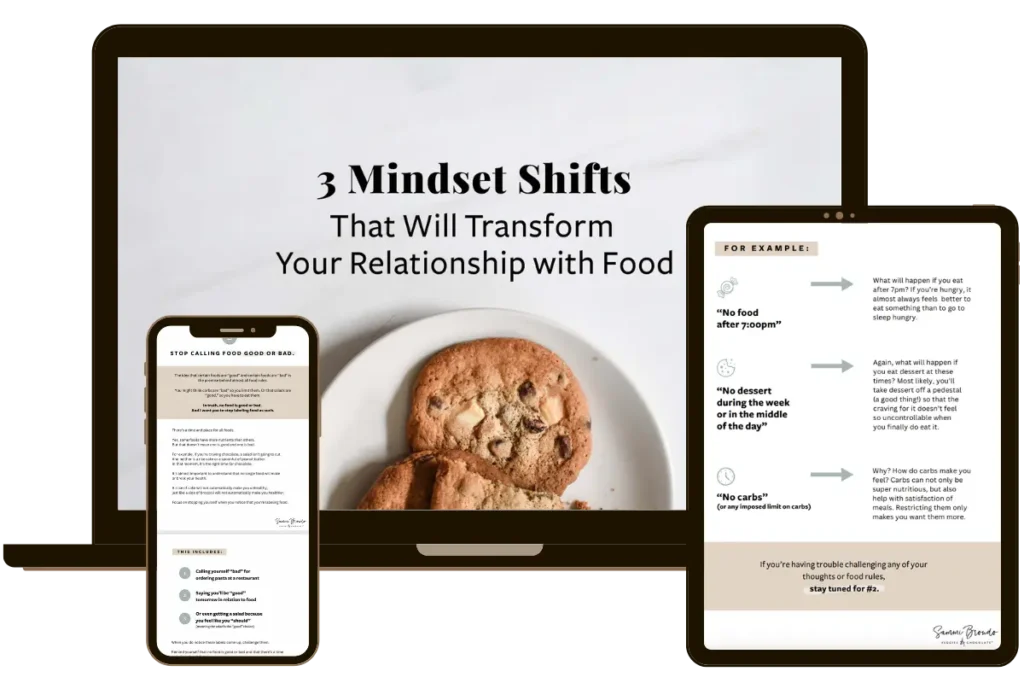The Stress-Free Way Keep “Trigger” Foods in the House
By Sammi Brondo — July 26, 2024

I get it. I can’t tell you how many times I’ve talked with clients and friends alike who don’t keep certain foods in the house out of fear of eating all of that food at once. But what if I told you there was another way?

I’m a big proponent of keeping these “trigger” foods in the house. Not only because you shouldn’t have to live feeling like you can’t have certain foods in your house. But, more importantly, because if you like the food that much, it deserves a spot in your kitchen.
I understand the concern though – once a food has been deemed “off limits,” it automatically becomes more tempting. That foods gets placed on a pedestal and, coincidentally, the more you tell yourself that you can’t have it, the more that you want it. So it’s really no wonder that as soon as you put this forbidden food in your house, you feel out of control around it.
Then, maybe out of guilt or disappointment, you vow to never buy that food or keep it in your house again… until you really want it and finally cave. And so the cycle continues.
I promise you: there’s another way. It includes keeping this food in your house. And it’s a much less stressful and more enjoyable way to think about food (and live) in general.
Here’s how:

1. Buy the food… duh.
To make things easy, let’s call the trigger food ice cream. So step 1: go buy ice cream.
Not the diet version. Not the little pints that are X amount of calories so that you don’t “feel guilty if you eat the whole thing” (eye roll). Buy the real thing and the ice cream that sounds best to you. The first step, of course, is getting the ice cream into your kitchen!
It may be scary at first, especially if ice cream has been considered off limits for so long. But, keep reading girlfriend: I got you.
2. Give yourself unconditional permission to eat all foods.
Unconditional permission means any food, any time. Truly, truly allow and tell yourself that you can have any food, any time you want it.
I know this may sound scary, but this step is key. We can’t have any lingering or subconscious rules still floating around. Because, once you truly understand that you can eat any food, any time, it actually takes most foods off their pedestal and turns them into what they are… just food.
I promise you: unconditional permission doesn’t mean you’re going to binge eat unhealthy food all the time. It simply means you’re giving those formerly forbidden foods a lot less power.
3. Ask yourself what you really want.
If you could eat anything – literally anything – in the world right now, what would it be? Don’t forget, you have unconditional permission!
Interestingly, before having unconditional permission, you might’ve automatically said ice cream. But, if you know that you’re allowed to eat anything you want in this moment, what would it be? A lot of my clients are surprised to find that, often times, the answer isn’t ice cream.
And sometimes, it may be ice cream too. When it is, enjoy the ice cream. Eat it mindfully. Put it in a bowl and sit down with it. Eat it slowly and truly taste and enjoy it. Don’t beat yourself up afterwards. Because, after all, ice cream is allowed.
When you first start doing this, you may find yourself eating a lot of the trigger food. It may really be what you want a lot of time. And that’s okay. If it’s a food that’s been off limits for a while, it really might take a while to truly feel satisfied and also to trust that you can have that food any time.
One of my favorite examples of this is from the book Breaking Free from Emotional Eating by Geneen Roth. In the book, Roth finally allowed herself to eat any food she wanted any time. Surprisingly, she found that all she wanted was cookies… for two weeks straight. She hadn’t allowed cookies for so long that it took a lot of cookies to feel satisfied. She started to worry if she’d ever eat anything else again.
But then, something interesting happened. After two weeks, she couldn’t even look at another cookie. All she wanted was a big, fresh salad.
Our bodies are smart. They naturally crave a balance of foods that will provide both the nutrients and nourishment that we need.
When we’ve been ignoring cravings or not allowing foods for a while, those foods be overly tempting at first. It will take a lot of that food to feel satisfied. But, once we finally feel satisfied and trust that we can have that food any time, the cravings really start to get less frequent and intense – making it much easier to keep these foods in the house.
And eventually, over time, I like to recommend having a variety of options of these foods around. For example, if desserts in general were a trigger, try keeping things like ice cream, cookies and chocolate around. Once you feel comfortable, you’ll start to find that having options doesn’t mean you binge eat everything at once. On the contrary, knowing the dessert is there and that you can eat it any time enables you to truly determine what you want and if you even want it at all.
These concepts are scary, but so, so worth it. Look at this way: if you love ice cream, you can live your life one of two ways. One would be not allowing ice cream in your house, eventually having an insatiable craving for it, bingeing on it and then not allowing it yet again. Option two would be feeling comfortable to keep ice cream in your house so that you can mindfully enjoy a bowl or so every so often when the craving hits. I hope you’ll agree that the latter option sounds much more freeing, fun and sustainable.
Want more tips on creating a sustainable healthy relationship with food? Check out my membership program, All Foods Fit, with 12 thorough lessons to teach easy ways to create a healthy relationship with food. Or, check out my e-book, 7 Days to Make All Foods Fit, to learn a step by step guide to create a healthier relationship with food in just 7 days.

